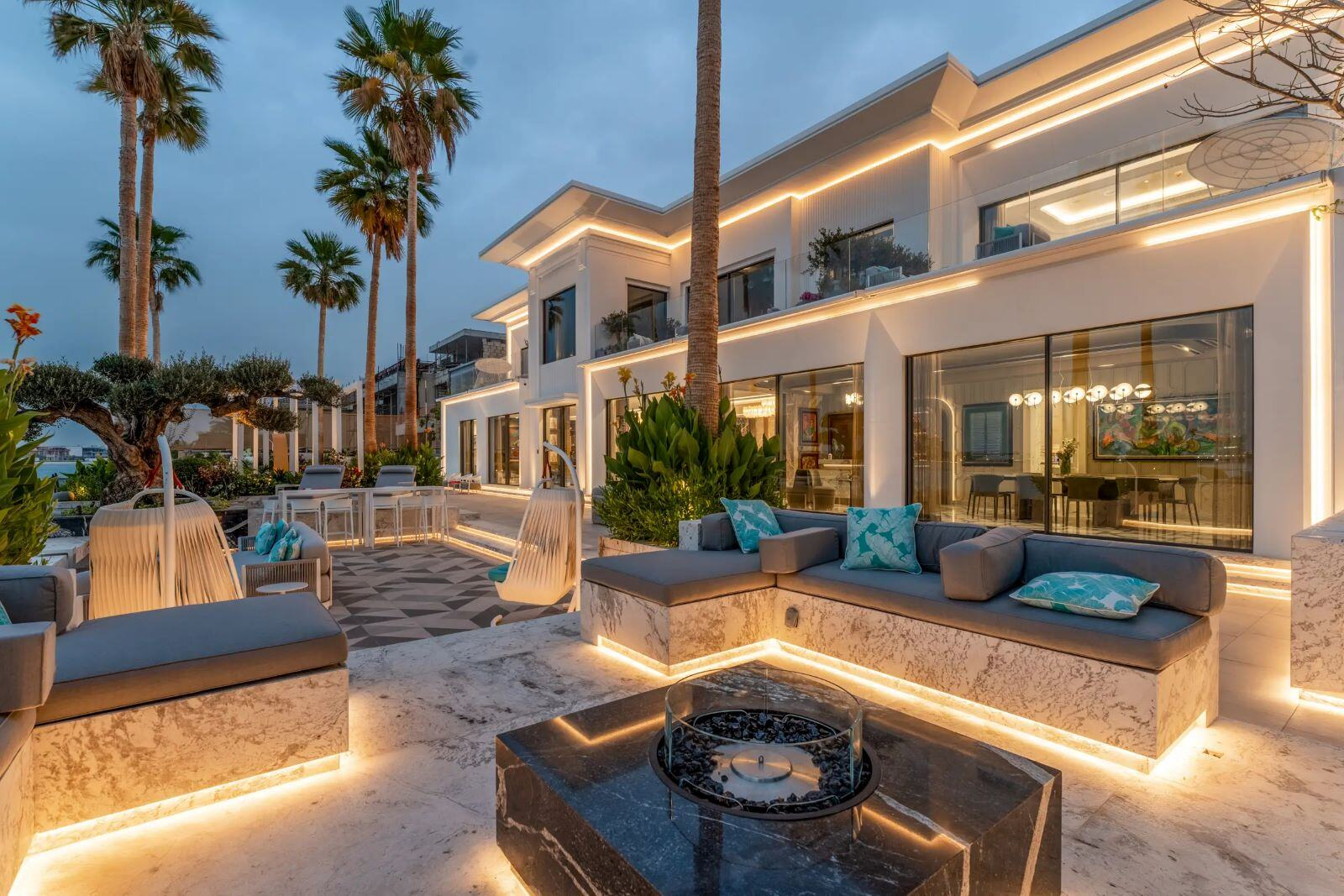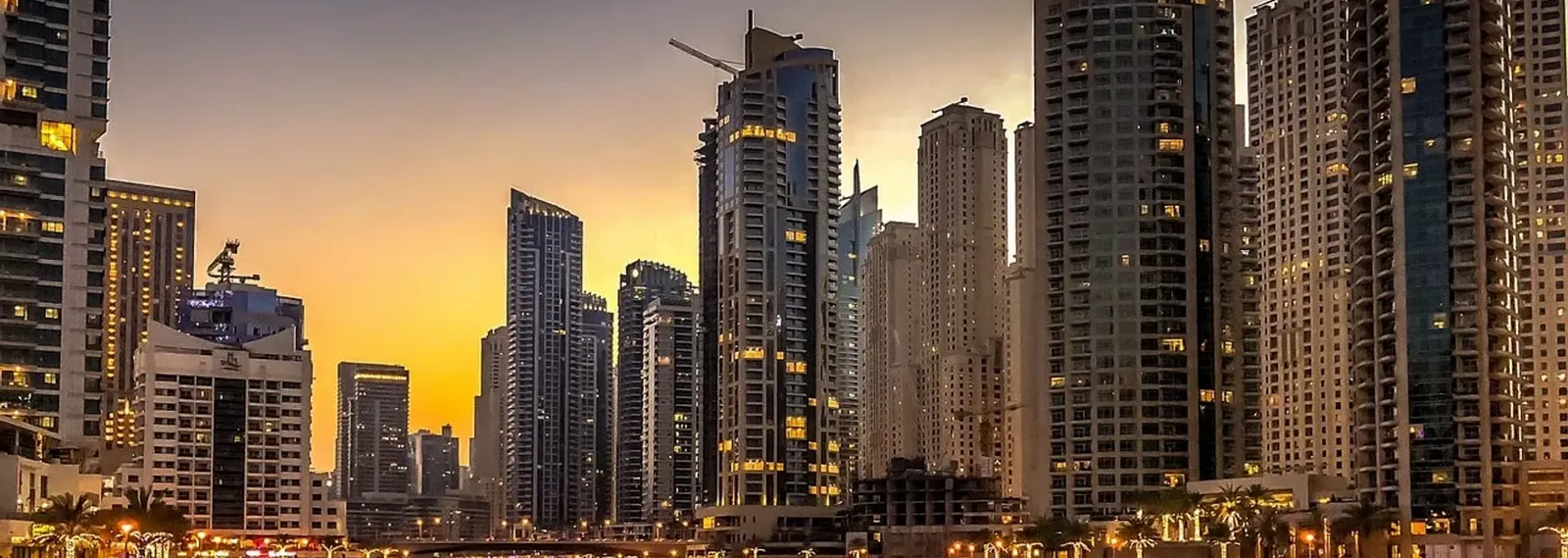Now Reading: Palm Jumeirah Villas: Why This Island Stays Dubai’s Top Luxury Address
-
01
Palm Jumeirah Villas: Why This Island Stays Dubai’s Top Luxury Address
Palm Jumeirah Villas: Why This Island Stays Dubai’s Top Luxury Address

Table of Contents
Imagine waking up in a sprawling villa on Palm Jumeirah, where turquoise waves kiss your private beach and your investment grows in Dubai’s most iconic address. In 2025, Dubai’s real estate market is soaring, with 96,000 transactions worth $87 billion in the first half, 58% driven by buyers from the UK, India, Russia, and China.
Palm Jumeirah remains the pinnacle of luxury, offering 100% freehold ownership, a dirham pegged to the U.S. dollar, and no personal income tax, capital gains tax, or annual property taxes. Delivering 6-8% rental yields and 10-15% price appreciation, Palm Jumeirah villas outshine London (2-4%) and New York (2-3%). Properties over $545,000 qualify for a 10-year Golden Visa, boosting residency appeal.
Fueled by 25 million tourists and a 4% population surge, projects like Atlantis The Royal Residences, Signature Villas, and XXII Carat are top draws for high-net-worth investors. Navigating fees, VAT, and 2025 regulations is key to securing your slice of this elite island.
Why Palm Jumeirah Villas Define Luxury
Located 25 minutes from Dubai International Airport via Sheikh Zayed Road or water taxis, Palm Jumeirah offers villas with private beaches, infinity pools, and smart home systems, boasting vacancy rates of just 2-3% compared to 7-10% globally. You keep 100% of rental income $80,000-$200,000 annually on $2.5 million-$10 million villas versus $44,000-$120,000 elsewhere after taxes.
Zero capital gains tax saves $120,000-$350,000 on a $600,000-$1.5 million profit, and no annual property taxes save $25,000-$100,000 yearly, unlike London’s council tax (up to 2%) or New York’s property tax (1-2%). Residential purchases dodge 5% VAT ($125,000-$500,000), and the Golden Visa enhances long-term value. With 17 kilometers of coastline, 80 resorts, and attractions like Atlantis The Royal, villas achieve 80-85% occupancy for holiday rentals, ensuring 10-15% price growth.
Living here feels like stepping into a world of opulence.
No Personal Income Tax: Rentals That Elevate Wealth
Palm Jumeirah imposes no personal income tax, letting you keep every dirham of rental income, unlike the U.S. (up to 37%) or UK (up to 45%). A $2.5 million villa yielding $80,000-$120,000 saves $36,000-$48,000, while a $10 million property yielding $150,000-$200,000 saves $67,500-$80,000. Short-term rentals, thriving with 25 million tourists, require a DTCM license ($408-$816), boosting yields by 10-20% ($8,000-$40,000).
Platforms like Airbnb drive bookings, but non-compliance risks fines up to $13,612, so proper licensing and guest registration are essential. Long-term leases, popular with affluent expats, need Ejari registration ($54-$136) for stability. Smart locks and AI-driven pricing tools maximize profits.
Tax-free rentals feel like a luxurious gift to your finances.
Zero Capital Gains Tax: Profit Without Limits
Palm Jumeirah offers zero capital gains tax, letting you keep 100% of sale profits. Selling a $2.5 million villa for $3.1 million after 25% appreciation yields a $600,000 tax-free profit, saving $120,000-$168,000 compared to London (20-28%) or New York (20-37%). A $10 million villa sold for $12.5 million yields a $2.5 million tax-free gain, saving $500,000-$700,000. Price growth of 10-15% is driven by scarcity and global demand from high-net-worth buyers. A 4% DLD fee applies on resale ($100,000-$400,000), often split, but tax-free profits make Palm Jumeirah a standout for long-term gains.
Keeping every dirham feels like a triumph of wealth.
No Annual Property Taxes: Save on Elite Ownership
Unlike global markets where annual property taxes cost $25,000-$100,000 on $2.5 million-$10 million properties, Palm Jumeirah has none, easing ownership costs. Maintenance fees range from $15,000-$25,000, reflecting premium amenities like private beaches and 24/7 security. A 5% municipality fee on rentals ($4,000-$10,000) applies, higher than mainland areas due to luxury services. These costs are still lower than London’s council tax ($50,000-$100,000) or New York’s property tax, making villa ownership more affordable over time.
No property taxes feel like a warm embrace for your investment.
VAT Rules: A Luxury Investor’s Advantage
Residential villa purchases skip 5% VAT, saving $125,000-$500,000 on $2.5 million-$10 million properties, unlike commercial properties or the UK’s stamp duty (up to 12%, or $300,000-$1.2 million). Off-plan purchases, like those in XXII Carat, may incur 5% VAT on developer fees ($25,000-$200,000), recoverable via Federal Tax Authority (FTA) registration ($500-$1,000). Short-term rental operators must register for VAT if revenue exceeds $102,041, charging 5% but claiming credits on expenses like DTCM fees ($408-$816). A $2.5 million villa yielding $80,000-$120,000 incurs $4,000-$6,000 in VAT but allows $1,000-$2,000 in credits. Non-compliance risks fines up to $13,612, so meticulous records are crucial.
VAT exemptions feel like a savvy boost to your returns.
DLD Fees and Title Deeds: Securing Your Island Haven
The 4% DLD fee, typically split, is a key cost: $100,000 for a $2.5 million villa or $400,000 for a $10 million property. Gift transfers to family or shareholders reduce DLD to 0.125%, saving $97,500-$387,500. For example, gifting a $10 million villa cuts the DLD fee from $400,000 to $12,500. Title deed issuance costs $136-$272 and must be registered with the DLD.
Broker fees, typically 2% ($50,000-$200,000), may be waived for off-plan projects like Signature Villas. Mortgage registration (0.25% of the loan, or $6,250-$25,000) and valuation fees ($680-$1,360) apply for financed deals. The 2025 Oqood system ensures escrow compliance for off-plan purchases, protecting your investment.
Title deeds feel like the key to your coastal palace.
Corporate Tax: A Business Buyer’s Consideration
The 9% corporate tax, introduced in 2023, applies to businesses with profits over $102,110. A company leasing a $2.5 million villa yielding $80,000-$120,000 faces a 9% tax ($7,200-$10,800), reducing net income to $72,800-$109,200. A $10 million villa yielding $150,000-$200,000 incurs $13,500-$18,000 in tax.
Qualified Free Zone Person (QFZP) status in areas like Dubai Multi Commodities Centre (DMCC) avoids this, saving $20,400-$61,200, with setup costs of $2,000-$5,000. Small business relief waives corporate tax for revenues under $816,000 until December 31, 2026. Individual ownership skips this tax entirely, ideal for most luxury buyers.
Corporate tax feels like a hurdle you can bypass with strategy.
New Tax Rules for 2025

The Domestic Minimum Top-up Tax (DMTT), effective January 1, 2025, imposes a 15% tax on multinationals with revenues over €750 million ($793 million). Individual investors and smaller entities are unaffected, and QFZP status avoids DMTT, saving $20,400-$61,200. Cabinet Decision No. 34 refines Qualifying Investment Fund (QIF) rules, exempting corporate tax if real estate income is below 10%.
A QIF earning $1 million, with $200,000 from rentals, faces 9% tax ($14,400) on 80% ($160,000). A July 2025 policy allows corporate tax deductions on fair market value depreciation, saving $6,545-$9,000 annually for a $3 million villa revalued at $3.75 million.
New rules feel like a game with luxurious rewards.
Top Palm Jumeirah Villa Projects
1. Atlantis The Royal Residences
Atlantis The Royal Residences ($2.5 million-$10 million) offer ultra-luxury villas with 6-8% yields and 10-15% price growth, boasting 80-85% occupancy due to beachfront allure and Atlantis The Royal’s global fame. A $2.5 million villa yields $80,000-$120,000 tax-free, saving $36,000-$48,000. Selling for $3.1 million yields a $600,000 tax-free profit, saving $120,000-$168,000. No property taxes save $25,000-$50,000, and VAT exemption saves $125,000. Maintenance fees are $15,000-$25,000, with a 5% municipality fee ($4,000-$6,000). QFZP saves $20,400-$36,000. U.S. investors deduct depreciation ($45,454-$90,909), saving up to $31,818. Golden Visa eligibility draws elite buyers.
Atlantis The Royal feels like the peak of global luxury.
2. Signature Villas
Signature Villas ($4 million-$8 million) offer beachfront villas with 6-8% yields and 10-15% price growth, featuring private pools and smart home systems. A $4 million villa yields $120,000-$160,000 tax-free, saving $54,000-$64,000. Selling for $5 million yields a $1 million tax-free profit, saving $200,000-$280,000. No property taxes save $40,000-$80,000, and VAT exemption saves $200,000. Maintenance fees are $15,000-$20,000, with a 5% municipality fee ($6,000-$8,000). QFZP saves $30,600-$48,960. U.S. investors deduct depreciation ($72,727-$145,455), saving up to $50,909. High-net-worth tenants ensure demand.
Signature Villas feel like a private coastal masterpiece.
3. XXII Carat
XXII Carat ($5 million-$10 million) offers exclusive villas with 6-8% yields and 10-15% price growth, featuring marble interiors and private beach access. A $5 million villa yields $150,000-$200,000 tax-free, saving $67,500-$80,000. Selling for $6.25 million yields a $1.25 million tax-free profit, saving $250,000-$350,000. No property taxes save $50,000-$100,000, and VAT exemption saves $250,000. Maintenance fees are $20,000-$25,000, with a 5% municipality fee ($7,500-$10,000). QFZP saves $36,000-$61,200. U.S. investors deduct depreciation ($90,909-$181,818), saving up to $63,636. Its exclusivity attracts global elites.
XXII Carat feels like a rare jewel of luxury.
Why Palm Jumeirah Stands Out
Price Range: $2.5 million-$10 million, targeting ultra-luxury buyers.
Rental Yields: 6-8%, with short-term rentals adding 10-20% ($8,000-$40,000).
Price Appreciation: 10-15%, driven by scarcity and global demand.
Lifestyle: Private beaches, resorts, and smart home features define opulence.
Amenities: Atlantis The Royal, Nakheel Mall, and 24/7 security elevate appeal.
ROI Verdict: 7-10% ROI, blending prestige with strong returns.
Investing here feels like owning a piece of Dubai’s crown.
Strategies to Maximize Returns
For individuals: First, hold villas personally to avoid corporate taxes, saving $20,400-$61,200. Second, negotiate DLD fee splits, saving $50,000-$200,000. Third, use gift transfers to reduce DLD to 0.125%, saving $97,500-$387,500. Fourth, recover 5% VAT on developer fees via FTA registration ($500-$1,000). Fifth, leverage double taxation treaties with 130+ countries, saving $36,000-$80,000. Sixth, U.S. investors deduct depreciation ($45,454-$181,818), saving up to $63,636.
For corporates: Secure QFZP status, keep QIF income below 10%, and claim depreciation deductions. Hire property managers ($15,000-$25,000 annually) and tax professionals ($1,000-$3,000) to avoid fines up to $136,125. Focus on short-term rentals for maximum yields.
These strategies feel like a roadmap to your luxury wealth.
Risks to Watch in 2025
A projected oversupply of 182,000 units by 2026 has minimal impact on Palm Jumeirah due to its exclusivity, but high maintenance fees ($15,000-$25,000) require budgeting. Choose trusted developers like Nakheel or Emaar and verify escrow compliance via the 2025 Oqood system. Non-compliance with VAT or DTCM rules risks fines up to $13,612, and corporate tax errors can cost $136,125. Indian investors must disclose properties in India’s Foreign Asset schedule to avoid $135,000 penalties. Currency fluctuations, like a 5% dirham shift, could affect returns.
Why Palm Jumeirah Villas Are Dubai’s Finest
Palm Jumeirah villas, from Atlantis The Royal Residences to XXII Carat, offer 6-8% yields, 10-15% growth, and tax-free savings of $25,000-$350,000 annually. With Golden Visa perks, 80-85% rental occupancy, and iconic attractions, they remain Dubai’s top luxury address. Navigate fees, choose your villa, and invest in a legacy of wealth and prestige in 2025.
read more: Dubai Property Market Guide: Best Investment Areas for 2025 and Beyond






















